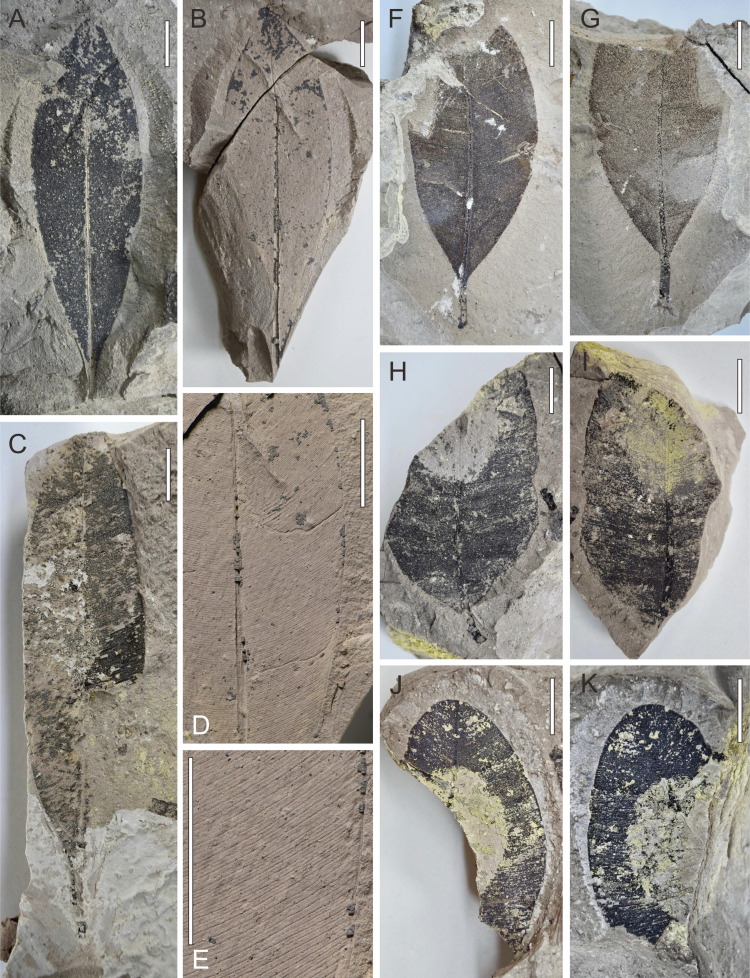Calophyllum Linnaeus is one of the largest genera in Calophyllaceae with approximately 190 living species. Previously, there have been two pollen records of Calophyllum from the Middle Miocene of Thailand.
In a recent study published in Palaeoworld, researchers from Xishuangbanna Tropical Botanical Garden (XTBG) report well-preserved fossil leaves of Calophyllum from the late Oligocene–Early Miocene of Ban Pu sub-basin in Li Basin, Lamphun Province, northern Thailand. It is the first macrofossil record of this genus in Thailand.
The researchers collected five Calophyllum leaf fossil specimens from Ban Pu sub-basin in Li Basin, Thailand. They identified the fossils through detailed morphological comparison with leaves of extant and fossils. The fossils were assigned to Calophyllum, based on several key leaf characteristics such as oblanceolate or oblong in shape and parallel secondary veins, nearly perpendicular to the midvein, as well as secondary veins alternate, closely placed, craspedodromous, parallel, dense, and distinct on surface, forming marginal veins.
Those leaf fossils from Li Basin are most similar to C. suraikholaensis. Based on the morphological details, it is difficult to further attribute the fossil leaves to the species level with the limited morphological characteristics preserved. Therefore, the researchers treated those fossils to Calophyllum sp.
"Our fossils are the first macrofossil records of Calophyllum in Indochina. Fossils in this study together with previous fossil records show that, the vast regions from India through the Indochina Peninsula to South China were connected in the Miocene by subtropical forest with floristic exchange. It suggests that India may be a centre for the origin of Calophyllum and it spread into other regions," said SU Tao of XTBG.
The discovery of Calophyllum fossils represents a humid, subtropical to tropical climate in the late Oligocene–Early Miocene in Li Basin.
Contact
SU Tao Ph.D Principal Investigator
Key Laboratory of Tropical Forest Ecology, Xishuangbanna Tropical Botanical Garden, Chinese Academy of Sciences, Mengla, Yunnan 666303, China
E-mail: sutao@xtbg.org.cn
Published: 14 September 2023

Fossil leaves of Calophyllum suraikholaensis . (Image by XTBG)

